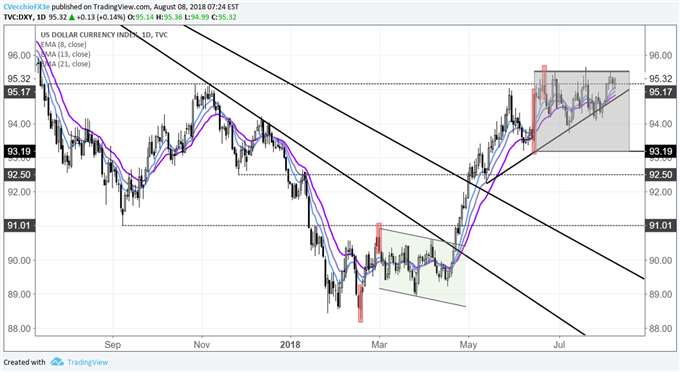
The US Dollar (via the DXY Index) has thus far failed to breakout of its consolidation to fresh yearly highs, and the news flow through the first half of the week has been less than helpful in getting us there. The latest impediment came in the form of new retaliatory tariffs from China, announced within the last hour.
The 25% retaliatory tariffs on imported US goods to the tune of $16 billion is just the latest development in the seemingly ‘tit-for-tat’ trade war. But with the Chinese Ministry of Commerce saying that it has been “forced to retaliate” against “US tariffs [that] are very unreasonable,” it doesn’t sound like the recent signs of de-escalation are bearing fruit.
As market participants digest the new round of tariffs, the US Dollar finds itself maintaining its trajectory for a potential breakout to new highs. Helping the cause has been a persistently weaker British Pound over the past few weeks, which is now at its lowest level in a year versus the US Dollar and its lowest in nine months versus the Euro.
Signs that UK Prime Minister Theresa May is losing the confidence of her constituents, and thus, the rising odds of a ‘hard Brexit’ outcome are proving too difficult of pills to swallow for Sterling bulls. The developments around the May government in recent days speak to the concerns Bank of England policymakers issued last week when they postponed any further rate hikes until the Brexit issue is resolved.
DXY Index Price Chart: Daily Timeframe (July 2017 to July 2018) (Chart 1)

So, for now, the six-week long DXY Index consolidation remains intact after the recent failed attempt at a topside breakout. We’re awaiting a close above 95.53 (the June 21 bearish key reversal and the June 27 to 29 evening doji star candle cluster highs) to confirm that the recent price congestion is ending. For confirmation, a move below 1.1510 in EUR/USD is necessary to confirm the DXY Index breakout.
















